GCC shelters from the trade wars
18 April 2025

The ‘Liberation Day’ tariffs that US President Donald Trump announced on 2 April have plunged global markets into turmoil, with many previously bullish investors turning bearish as a large swathe of reciprocal tariffs were announced.
A week later, Trump announced a 90-day pause on the new tariff regime for most trading partners except China, which received an increased tariff rate of 145%, which was then increased to 245%.
As global stock markets suffered some of their worst days on record, for the GCC, the main mechanism of transmission of economic pain came through the negative oil price shock. Brent crude prices dropped by about 16% and dipped below $60 a barrel for the first time since 2021.
Falling prices
For TS Lombard’s general base case, the negative impact of weaker oil demand is offset by more constructive aspects, which highlight the region’s resilience as it is relatively sheltered from the direct effects of Trump’s tariffs compared to most other emerging markets.
To focus on the negatives first, oil prices have taken a significant hit, dropping to lows unseen since before the Russia-Ukraine war.

It has been generally accepted that during the period from 2022 to February 2025, there was a $70 a barrel price floor for oil, supported by reduced Opec+ production in 2023 and 2024, coupled with geopolitical risk premium resulting from conflicts in Europe and the Middle East.
The geopolitical narrative began to untangle in 2024, and then completely unravel in 2025, as markets no longer price in any real oil shock risk.
 This story has been exacerbated in 2025 with a twofold blow in early April: Trump announced his Liberation Day tariffs, and Opec+ announced plans to raise production even further, from an increase of 114,000 barrels a day (b/d) to 411,000 b/d by May, which shocked the oil market.
This story has been exacerbated in 2025 with a twofold blow in early April: Trump announced his Liberation Day tariffs, and Opec+ announced plans to raise production even further, from an increase of 114,000 barrels a day (b/d) to 411,000 b/d by May, which shocked the oil market.
It is key to note that non-oil expansion depends on crude prices to finance growth, rather than for oil’s contribution to GDP. In Saudi Arabia, for example, non-oil GDP grows at about 2% when oil is below the $60 a barrel range, versus 4.7% on average above $80 a barrel.
Low oil prices become a concern when discussing GCC government budget balances. Economic diversification and oil decoupling plans have required high levels of capital expenditure, as the region begins to brace for a future of less oil dependency – though the deadline for this remains at least 10 years away.
Although GCC markets have decoupled from oil, overall funding and spending in the GCC remains driven by oil revenues. This can be seen with the breakeven oil prices for GCC countries.
There is a wide range of fiscal breakeven points within the GCC, with states such as Bahrain and Saudi Arabia suffering the most from drops in oil revenues. Despite these variations, the outlook for oil can be summarised in four points:
- Opec+ policy creates excess supply, coupled with weak global – and namely Chinese – demand on crude;
- Pricing out of geopolitical risk;
- Tariff policy creates global uncertainty, especially in energy-intensive industries;
- An Opec decision on production numbers will hinge on the outcome of Trump’s visit to Saudi Arabia, Qatar and the UAE.
TS Lombard does not expect oil prices to fall much further. It would not be in Trump’s favour to depress oil prices too far, as it would result in too much pain for US shale producers.
Trump wants lower energy inputs; a positive supply-side factor; and to showcase a win from his campaign pledges, many of which have yet to materialise. Nonetheless, the base case for oil remains bearish this year relative to the past two years, although TS Lombard is not overly negative on expectations about current price equilibrium in the $60-$70 a barrel range.
 Potential upside
Potential upside
With markets remaining in a tumultuous state, and while questions are being asked about trade deals and the re-implementation of tariffs, it is key to note that oil, energy and various petrochemicals products have been exempt from US tariffs.
This means that, for a volatile and demand-dependent market, oil may see some upside towards the end of this year, as markets begin to price in tariff risk and supply-side disruption.
In terms of non-oil exports from the GCC to the US, with the exception of aluminium, little has changed from pre-Liberation Day operations.
In 2024, the US enjoyed a trade surplus with the GCC in general. For example, 91% of Saudi exports to the US in January 2025 were crude or crude-based products such as ethylene, propylene polymers, fertilisers, some plastics products, and rubber – most of which are exempt from tariffs.
For the UAE, 80% of exports to the US were similarly exempt, including supplying the US with 8% of its total aluminium demand. Significantly, Canada and China are the main aluminium exporters to the US.
With China and Canada also being major targets for Trump, countries such as the UAE and Bahrain will maintain a competitive advantage in selling to the US market, despite facing either the 10% baseline tariff, or the specific 25% aluminium tariff. The best case scenario is that both these GCC states are able to negotiate a trade deal that could exempt or curb the negative tariff effect on their aluminium exports.
Limiting impact
Although several industries have already suffered – as petrochemicals in general has suffered because of the drop in demand and oversupply in the market – the GCC finds itself in a unique position. Its economies are geared to being market- and trade-friendly, and they have low regulatory barriers, large amounts of space and energy to engage in manufacturing-intensive activities.
Coupled with strong relations with the Trump administration, the GCC has both an economic and geopolitical opportunity to act as a global intermediary. It has already been announced that Trump’s first foreign visits will be to the region, and today major global negotiations – from ceasefires to investment mandates – take place in the GCC.
A common argument being made regarding the latest output decision by Opec+ is that it is a geopolitical ploy to appease Trump’s pursuit of lower energy prices and gain favourable negotiating positions for the GCC states. Items on this docket range from civilian nuclear and drone programmes through to the approach to Iran and the Gaza-Israel question.
 Saudi Arabia’s non-oil GDP remains high, showing the resilience of the kingdom when facing economic headwinds. Specifically, the kingdom has kept up its streak of strong non-oil purchasing managers’ index performances.
Saudi Arabia’s non-oil GDP remains high, showing the resilience of the kingdom when facing economic headwinds. Specifically, the kingdom has kept up its streak of strong non-oil purchasing managers’ index performances.
With the GCC exhibiting stable conditions as the world moves towards uncertainty and erecting trade barriers, the region’s overall competitiveness could be enhanced. This is especially true in the case of the real economy, where investments still have a mostly local rather than international reliance.
Overall, the short-term story relates to oil – and namely to the capital flows that oil brings, which fund economic diversification expenditures in the GCC.
Although lower oil prices are a key detractor for the region, the story is far from being all bad news.
Improved geopolitical relations and opportunities arising from the positioning of the GCC states allows them to exploit emerging gaps in markets that were previously dominated by economies that have been targeted with tariffs.

Exclusive from Meed
-
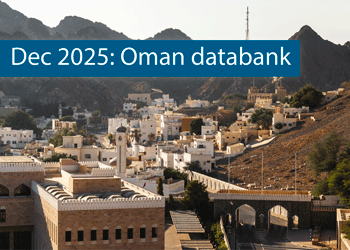 Oman’s growth forecast points upwards
Oman’s growth forecast points upwards24 December 2025
-
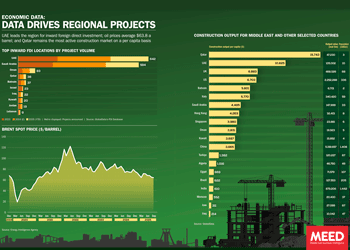 December 2025: Data drives regional projects
December 2025: Data drives regional projects23 December 2025
-
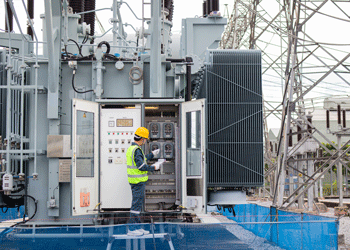 Local firm bids lowest for Kuwait substation deal
Local firm bids lowest for Kuwait substation deal22 December 2025
-
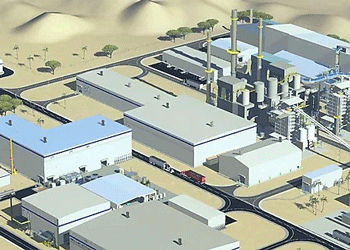 Saudi-Dutch JV awards ‘supercentre’ metals reclamation project
Saudi-Dutch JV awards ‘supercentre’ metals reclamation project22 December 2025
-
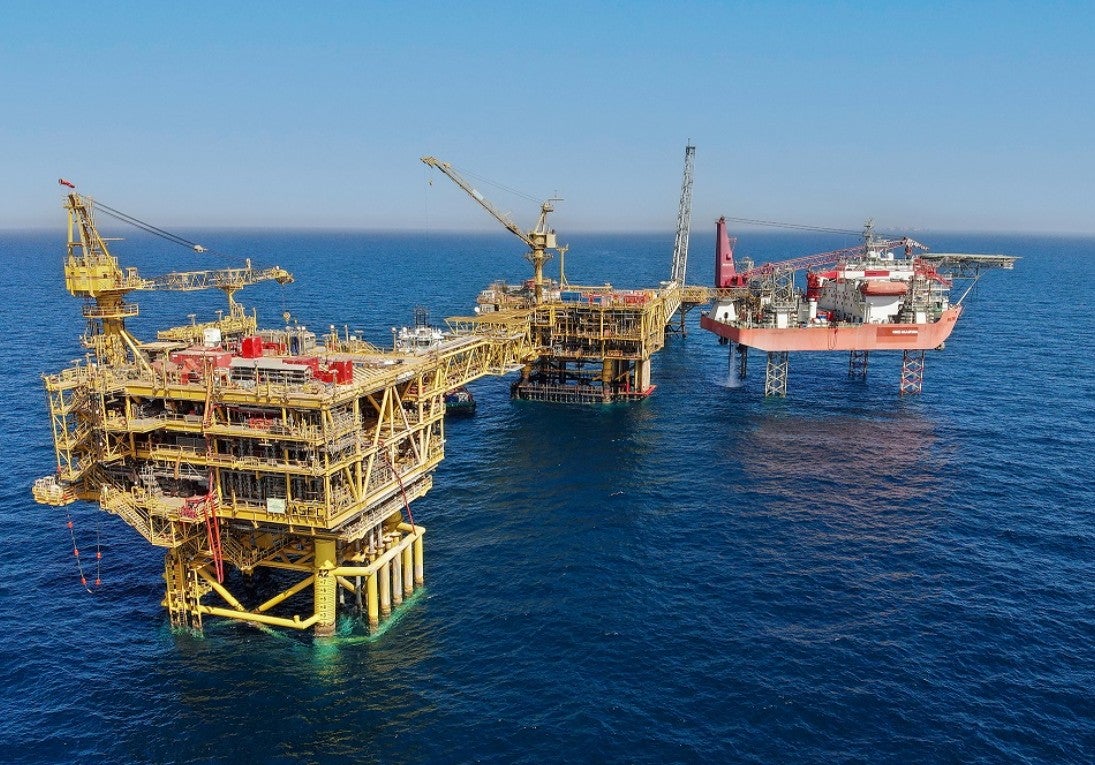 QatarEnergy LNG awards $4bn gas project package
QatarEnergy LNG awards $4bn gas project package22 December 2025
All of this is only 1% of what MEED.com has to offer
Subscribe now and unlock all the 153,671 articles on MEED.com
- All the latest news, data, and market intelligence across MENA at your fingerprints
- First-hand updates and inside information on projects, clients and competitors that matter to you
- 20 years' archive of information, data, and news for you to access at your convenience
- Strategize to succeed and minimise risks with timely analysis of current and future market trends

Related Articles
-
 Oman’s growth forecast points upwards
Oman’s growth forecast points upwards24 December 2025

MEED’s January 2026 report on Oman includes:
> COMMENT: Oman steadies growth with strategic restraint
> GVT & ECONOMY: Oman pursues diversification amid regional concerns
> BANKING: Oman banks feel impact of stronger economy
> OIL & GAS: LNG goals galvanise Oman’s oil and gas sector
> POWER & WATER: Oman prepares for a wave of IPP awards
> CONSTRUCTION: Momentum builds in construction sectorTo see previous issues of MEED Business Review, please click herehttps://image.digitalinsightresearch.in/uploads/NewsArticle/15306449/main.gif -
 December 2025: Data drives regional projects
December 2025: Data drives regional projects23 December 2025
Click here to download the PDF
Includes: Top inward FDI locations by project volume | Brent spot price | Construction output
MEED’s January 2026 report on Oman includes:
> COMMENT: Oman steadies growth with strategic restraint
> ECONOMY: Oman pursues diversification amid regional concerns
> BANKING: Oman banks feel impact of stronger economy
> OIL & GAS: LNG goals galvanise Oman’s oil and gas sector
> POWER & WATER: Oman prepares for a wave of IPP awards
> CONSTRUCTION: Momentum builds in construction sectorTo see previous issues of MEED Business Review, please click herehttps://image.digitalinsightresearch.in/uploads/NewsArticle/15306140/main.gif -
 Local firm bids lowest for Kuwait substation deal
Local firm bids lowest for Kuwait substation deal22 December 2025
The local Al-Ahleia Switchgear Company has submitted the lowest price of KD33.9m ($110.3m) for a contract to build a 400/132/11 kV substation at the South Surra township for Kuwait’s Public Authority for Housing Welfare (PAHW).
The bid was marginally lower than the two other offers of KD35.1m and KD35.5m submitted respectively by Saudi Arabia’s National Contracting Company (NCC) and India’s Larsen & Toubro.
PAHW is expected to take about three months to evaluate the prices before selecting the successful contractor.
The project is one of several transmission and distribution projects either out to bid or recently awarded by Kuwait’s main affordable housing client.
This year alone, it has awarded two contracts worth more than $100m for cable works at its 1Z, 2Z, 3Z and 4Z 400kV substations at Al-Istiqlal City, and two deals totalling just under $280m for the construction of seven 132/11kV substations in the same township.
Most recently, it has tendered two contracts to build seven 132/11kV main substations at its affordable housing project, west of Kuwait City. The bid deadline for the two deals covering the MS-01 through to MS-08 substations is 8 January.
https://image.digitalinsightresearch.in/uploads/NewsArticle/15305745/main.gif -
 Saudi-Dutch JV awards ‘supercentre’ metals reclamation project
Saudi-Dutch JV awards ‘supercentre’ metals reclamation project22 December 2025
The local Advanced Circular Materials Company (ACMC), a joint venture of the Netherlands-based Shell & AMG Recycling BV (SARBV) and local firm United Company for Industry (UCI), has awarded the engineering, procurement and construction (EPC) contract for the first phase of its $500m-plus metals reclamation complex in Jubail.
The contract, estimated to be worth in excess of $200m, was won by China TianChen Engineering Corporation (TCC), a subsidiary of China National Chemical Engineering Company (CNCEC), following the issue of the tender in July 2024.
Under the terms of the deal, TCC will process gasification ash generated at Saudi Aramco’s Jizan refining complex on the Red Sea coast to produce battery-grade vanadium oxide and vanadium electrolyte for vanadium redox flow batteries. AMG will provide the licensed technology required for the production process.
The works are the first of four planned phases at the catalyst and gasification ash recycling ‘Supercentre’, which is located at the PlasChem Park in Jubail Industrial City 2 alongside the Sadara integrated refining and petrochemical complex.
Phase 2 will expand the facility to process spent catalysts from heavy oil upgrading facilities to produce ferrovanadium for the steel industry and/or additional battery-grade vanadium oxide.
Phase 3 involves installing a manufacturing facility for residue-upgrading catalysts.
In the fourth phase, a vanadium electrolyte production plant will be developed.
The developers expect a total reduction of 3.6 million metric tonnes of carbon dioxide emissions a year when the four phases of the project are commissioned.
SARBV first announced its intention to build a metal reclamation and catalyst manufacturing facility in Saudi Arabia in November 2019. The kingdom’s Ministry of Investment, then known as the Saudi Arabian General Investment Authority (Sagia), supported the project.
In July 2022, SARBV and UCI signed the agreement to formalise their joint venture and build the proposed facility.
The project has received support from Saudi Aramco’s Namaat industrial investment programme. Aramco, at the time, also signed an agreement with the joint venture to offtake vanadium-bearing gasification ash from its Jizan refining complex.
Photo credit: SARBV
https://image.digitalinsightresearch.in/uploads/NewsArticle/15305326/main.gif -
 QatarEnergy LNG awards $4bn gas project package
QatarEnergy LNG awards $4bn gas project package22 December 2025
QatarEnergy LNG, a subsidiary of state-owned QatarEnergy, has awarded the main engineering, procurement, construction and installation (EPCI) contract for a major package for the second phase of its North Field Production Sustainability (NFPS) project.A consortium comprising the Italian contractor Saipem and state-owned China Offshore Oil Engineering Company (COOEC) has secured the EPCI contract for the COMP5 package. The contract value is $4bn, with Saipem declaring its share to be worth $3.1bn.
Milan-headquartered Saipem said the contract will run for about five years. The scope of work comprises engineering, procurement, fabrication and installation of two compression complexes, each including a compression platform, a living quarters platform, a flare platform supporting the gas combustion system, and the related interconnecting bridges. Each complex will have a total weight of about 68,000 tonnes.
Offshore installation operations will be carried out by Saipem’s De He construction vessel in 2029 and 2030.
MEED previously reported that the following contractors submitted bids for the NFPS phase two COMP5 package:
- Larsen & Toubro Energy Hydrocarbon (India)
- McDermott (US)
- Saipem/China Offshore Oil Engineering Company (Italy/China)
QatarEnergy LNG, formerly Qatargas, is said to have issued the tender for the NFPS phase two COMP5 package in the first quarter of the year.
Contractors submitted technical bids for the COMP5 package in late June, while commercial bids were submitted by 8 October, as per sources.
Based upon initial evaluation of bids by QatarEnergy LNG, L&TEH has emerged as the lowest bidder for the COMP5 package, followed by McDermott, with the consortium of Saipem and COOEC in third place, MEED reported in late October.
In the weeks following that, the project operator is said to have engaged all bidders for a final round of negotiations, during which the consortium of Saipem and COOEC is believed to have “clinched the deal”, according to sources.
The detailed scope of work on the COMP5 package covers the EPCI work on the following:
- Two gas compression platforms, each weighing 30,000-35,000 tonnes, plus jacket
- Two living quarters platforms, plus jacket
- Two gas flare platforms, plus jacket
- Brownfield modification work at two complexes
NFPS scheme
QatarEnergy’s North Field liquefied natural gas (LNG) expansion programme requires the state enterprise to pump large volumes of gas from the North Field offshore reserve to feed the three phases of the estimated $40bn-plus programme.
QatarEnergy has already invested billions of dollars in engineering, procurement and construction works on the two phases of the NFPS project, which aims to maintain steady gas feedstock for the North Field LNG expansion phases.
The second NFPS phase will mainly involve building gas compression facilities to sustain and gradually increase gas production from Qatar’s offshore North Field gas reserve over the long term.
Saipem has been the most successful contractor on the second NFPS phase, securing work worth a total of $8.5bn.
QatarEnergy LNG awarded Saipem a $4.5bn order in October 2022 to build and install gas compression facilities. The main scope of work on the package, which is known as EPCI 2, covers two large gas compression complexes that will comprise decks, jackets, topsides, interconnecting bridges, flare platforms, living quarters and interface modules.
The gas compression complexes – CP65 and CP75 – will weigh 62,000 tonnes and 63,000 tonnes, respectively, and will be the largest fixed steel jacket compression platforms ever built.
Following that, Saipem won combined packages COMP3A and COMP3B of the NFPS project’s second phase in September last year.
The scope of work on the combined packages encompasses the EPCI of a total of six platforms, approximately 100 kilometres (km) of corrosion resistance alloy rigid subsea pipelines of 28-inches and 24-inches diameter, 100km of subsea composite cables, 150km of fibre optic cables and several other subsea units.
Separately, QatarEnergy LNG awarded McDermott the contract for the NFPS second phase package known as EPCI 1, or COMP1, in July 2023. The scope of work on the estimated $1bn-plus contract is to install a subsea gas pipeline network at the North Field gas development.
In March this year, India’s Larsen & Toubro Energy Hydrocarbon (LTEH) won the main contract for the combined 4A and 4B package, which is the fourth package of the second phase of the NFPS project and is estimated to be valued at $4bn-$5bn.
The main scope of work on the package is the EPCI of two large gas compression systems that will be known as CP8S and CP4N, each weighing 25,000-35,000 tonnes. The contract scope also includes compression platforms, flare gas platforms and other associated structures.
LTHE sub-contracted detailed engineering and design works on the combined 4A and 4B package to French contractor Technip Energies.
NFPS first phase
Saipem is also executing the EPCI works on the entire first phase of the NFPS project, which consists of two main packages.
Through the first phase of the NFPS scheme, QatarEnergy LNG aims to increase the early gas field production capacity of the North Field offshore development to 110 million tonnes a year.
QatarEnergy LNG awarded Saipem the contract for the EPCI package in February 2021. The package is the larger of the two NFPS phase one packages and has a value of $1.7bn.
Saipem’s scope of work on the EPCI package encompasses building several offshore facilities for extracting and transporting natural gas, including platforms, supporting and connecting structures, subsea cables and anti-corrosion internally clad pipelines.
The scope of work also includes decommissioning a pipeline and other significant modifications to existing offshore facilities.
In addition, in April 2021, QatarEnergy LNG awarded Saipem two options for additional work within the EPCI package, worth about $350m.
QatarEnergy LNG awarded Saipem the second package of the NFPS phase one project, estimated to be worth $1bn, in March 2021.
Saipem’s scope of work on the package, which is known as EPCL, mainly covers installing three offshore export trunklines running almost 300km from their respective offshore platforms to the QatarEnergy LNG north and south plants located in Ras Laffan Industrial City.
Saipem performed the front-end engineering and design work on the main production package of the first phase of the NFPS as part of a $20m contract that it was awarded in January 2019. This provided a competitive advantage to the Italian contractor in its bid to win the package.
https://image.digitalinsightresearch.in/uploads/NewsArticle/15305330/main2239.jpg

